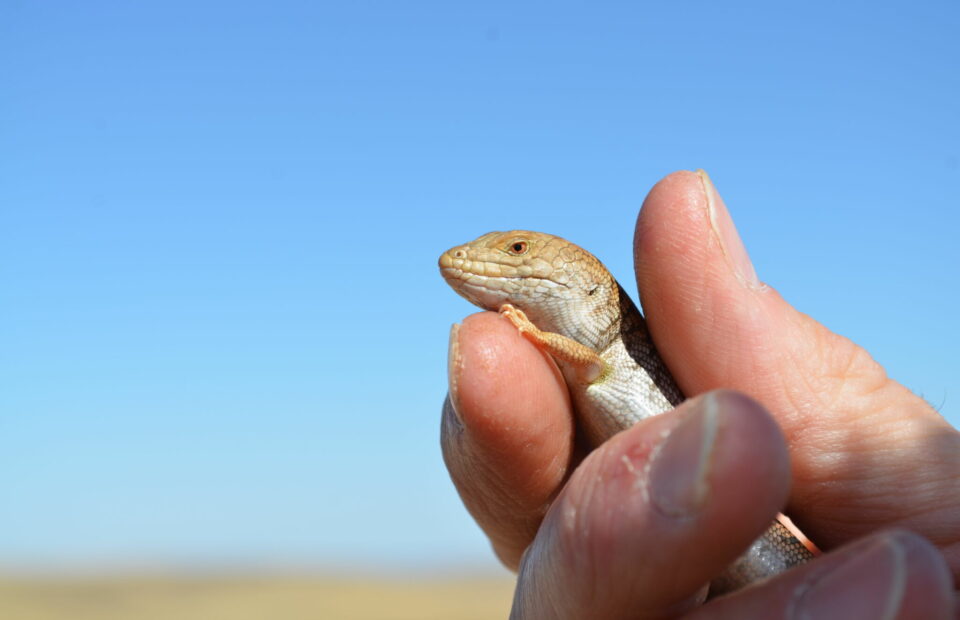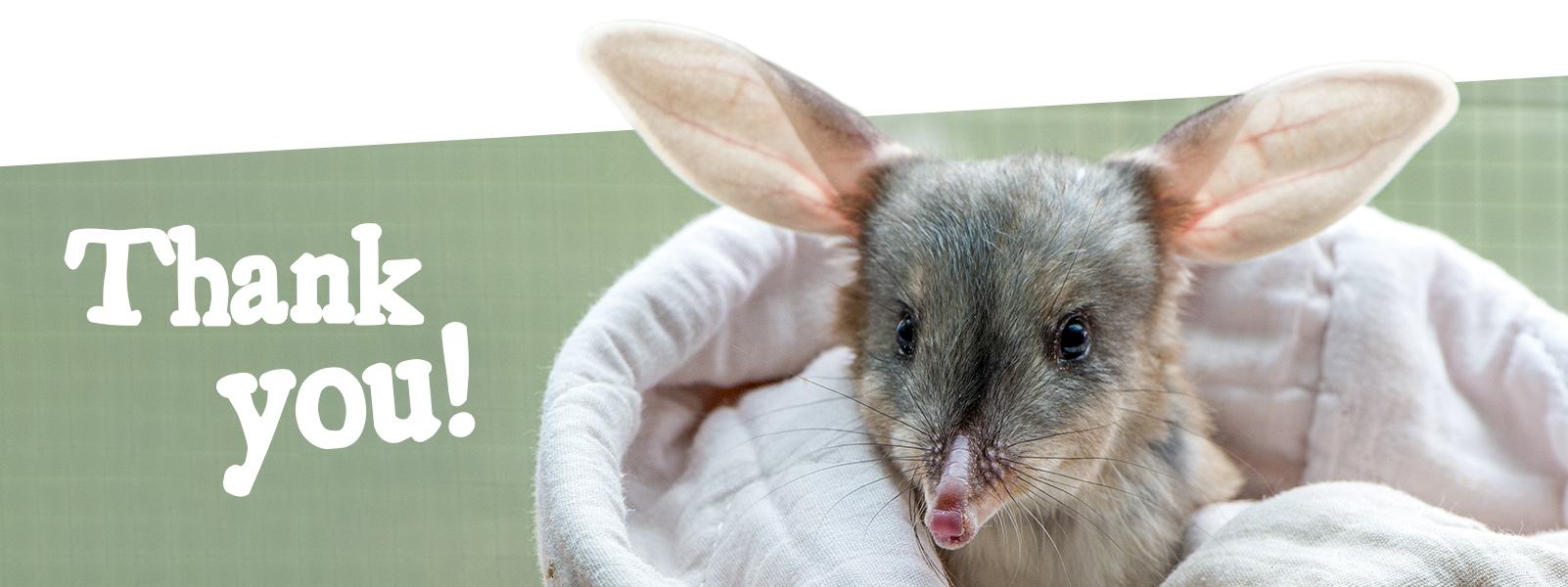Harrison Kent is an Adelaide University animal behaviour student and currently on a placement at Zoos SA. For National Threatened Species Day Harrison chose to write about the endangered Pygmy Bluetongue Lizard.
The Pygmy Bluetongue Lizard is an amazing little species of skink that’s endemic to South Australia, meaning we’re the only place where they can be found in the wild.
Pygmy bluetongues, as their name suggests, are quite small, in fact they are the smallest species within the Bluetongue Lizard genus (Tiliqua) with adults only reaching around 15cm in length. Their uniqueness doesn’t stop there, unlike the other members of the group, Pygmy Blue-tongue Lizards actually have a pink tongue!
These little lizards were first described as a species all the way back in 1868 after they were found in some grassland near Gawler. Before Adelaide and the mid north of South Australia became what they are today there were vast areas of open grassy woodlands and grassland which extended north throughout the Adelaide plains and the mid-north. Over time, these grasslands and grassy woodlands were turned into housing and farmland and the Pygmy Bluetongue Lizard became less common to a point where it was thought to be extinct by the 1960’s.
Then in 1992 something amazing happened, Herpetologist Graham Armstrong was driving around near Burra when he stumbled across a recently deceased brown snake. Within the stomach of the brown snake was a small skink. Much to Graham’s surprise, it was a Pygmy Bluetongue Lizard, marking the first time they’d been seen in 33 years! Since Graham’s initial rediscovery 30 more locations have been found to play home to the lizards.
Pygmy Bluetongue Lizards have some very specific environmental needs for survival. Unfortunately, the destruction of their grassland and grassy woodland habitat has drastically reduced their habitat with only around 0.3% of grasslands in South Australia still existing today. Their pickiness in habitat type isn’t the only thing that’s going against these animals. They spend most of their lives living in small burrows but, they don’t create these burrows themselves, they utilise the existing burrows of Trap Door Spiders! Luckily, it’s not all bad news…
Lots of effort has gone into saving this species so that they don’t disappear for good. Ongoing studies continue to monitor how their population is faring and a new population has been set up within their former distribution area. This area has allowed the population to grow by a significant amount and helped secure the future of the species. Along with this Zoos SA has been integral to the survival of the species with a captive breeding program creating an insurance population of the animals which can then be used to boost the genetic diversity and number of individuals in wild populations.
If you’d like to help the Pygmy Bluetongue Lizard there are a few things you can do. If you live close to areas that have pygmy bluetongues, limit the use of pesticides (as these can affect not only the lizard’s prey but the animals they need for burrows). You can also help by preserving any of the grasslands that may be useful habitat for the lizard. Or, finally, donating to Zoos SA to help fund the breeding program for these special little lizards.
You’ll find a Pygmy Bluetongue Lizard on display in Adelaide Zoo’s Reptile House. Drop in and take a look for yourself.








